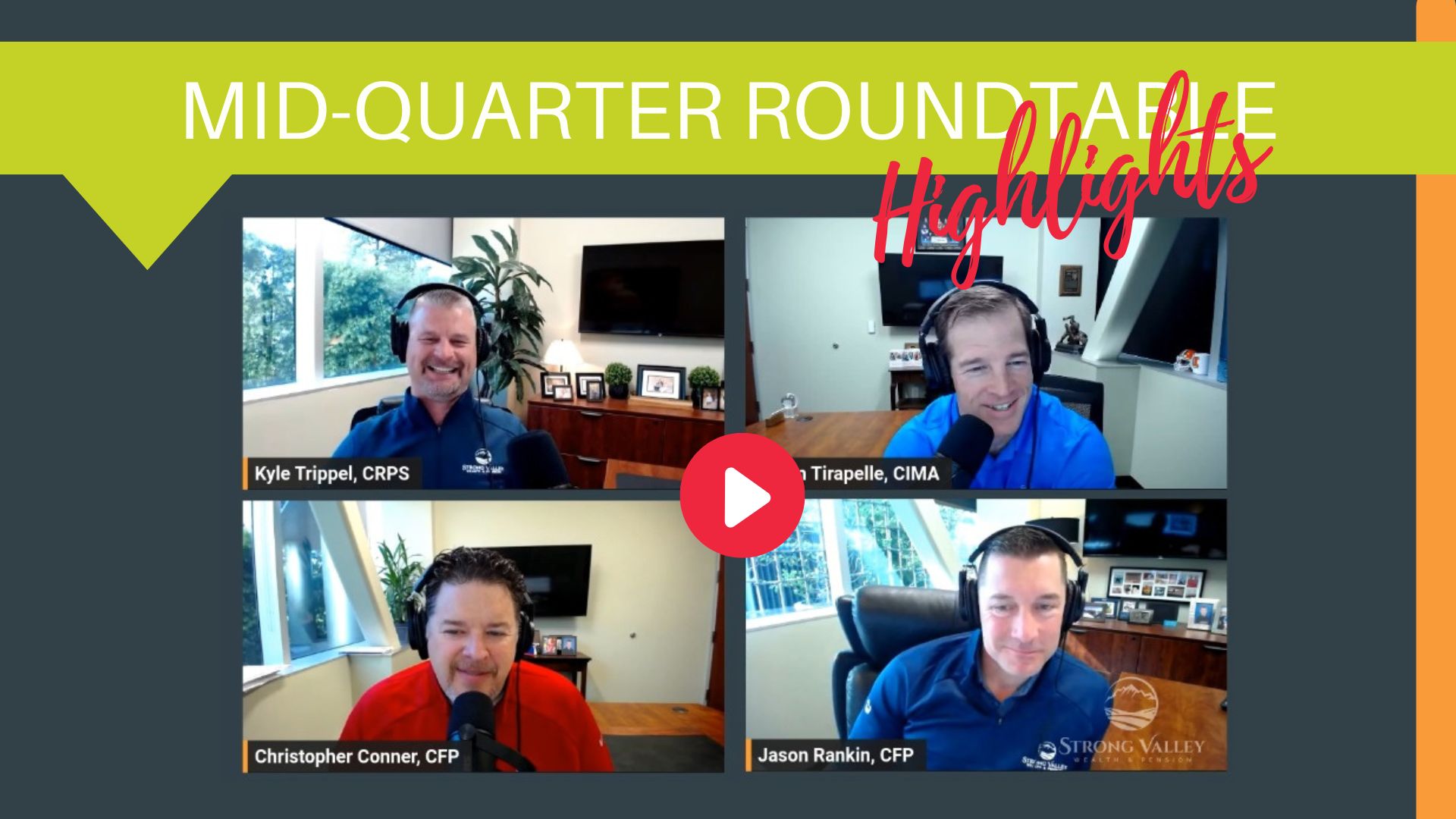You are now leaving the Strong Valley Wealth & Pension, LLC ("Strong Valley") website. By clicking on the "Schwab Alliance Access" link below you will be entering the Charles Schwab & Co., Inc. (“Schwab”) Website. Schwab is a registered broker-dealer, and is not affiliated with Strong Valley or any advisor(s) whose name(s) appears on this Website. Strong Valley is/are independently owned and operated. Schwab neither endorses nor recommends Strong Valley. Regardless of any referral or recommendation, Schwab does not endorse or recommend the investment strategy of any advisor. Schwab has agreements with Strong Valley under which Schwab provides Strong Valley with services related to your account. Schwab does not review the Strong Valley website(s), and makes no representation regarding the content of the Website(s). The information contained in the Strong Valley website should not be considered to be either a recommendation by Schwab or a solicitation of any offer to purchase or sell any securities.

Charitable giving should be integrated into overall wealth management, with careful planning and an advanced strategy to make a more meaningful impact. There are also unique opportunities for high-net-worth individuals to maximize the impact of their contributions through these four popular strategies.

As December 31 approaches, charitable giving becomes top of mind for many individuals. Whether driven by a desire to maximize tax incentives, honor a loved one, or thoughtfully allocate year-end bonuses, this season is a strategic time for philanthropy. For high-net-worth (HNW) and ultra-high-net-worth (UHNW) individuals, giving often requires careful planning and involves more advanced strategies to make a meaningful impact.
Charitable giving involves donating money, time, or possessions without expecting any personal benefit. While anyone can engage in philanthropy, HNW individuals have unique opportunities to maximize the impact of their contributions, from setting up private foundations to contributing appreciated securities.
For HNW clients, charitable giving is not just about generosity – it’s an integral part of a comprehensive wealth strategy. With younger generations, like HNW Gen X and Millennial investors, increasingly prioritizing giving, a well-planned strategy becomes even more crucial.
While definitions vary, HNW individuals typically have over $5 million in liquid assets, while UHNW individuals have over $30 million in investable assets.
Their giving strategies often need to account for complex assets and the desire to create long-term impact while considering family and community legacies.
The pandemic has amplified the significance of charitable giving. Research shows that over 85% of affluent households maintained or increased their giving during economic uncertainty, reflecting a desire to make a difference even amid challenging times. Interestingly, tax incentives are often a secondary motivation; HNW donors prioritize personal satisfaction and connections to meaningful causes. Many also engage family members in philanthropic discussions, creating a multi-generational commitment to giving back.
HNW individuals have several sophisticated giving options that can maximize their contributions while offering potential tax benefits. Here are four popular strategies:
1. Private Foundations. Private foundations are charitable organizations created by individuals or families. Founders maintain control over assets and grant-making, with foundations required to distribute at least 5% of assets annually. These entities offer estate and income tax benefits:
Foundations are ideal for philanthropists who want to create a legacy, set long-term giving goals, and involve family members in charitable decisions.
2. Donor-Advised Funds (DAFs). DAFs are flexible charitable giving accounts managed by sponsoring organizations. Donors can advise on investments and distributions while benefiting from an immediate tax deduction (up to 60% of AGI for cash gifts). The assets in a DAF grow tax-free, and donors can contribute cash or securities. DAFs are especially useful for “bunching” charitable donations into a single tax year while spreading grants over time.
3. Charitable Trusts. Charitable trusts come in two main forms:
Both trust types are irrevocable and offer a way to balance philanthropy with family wealth planning.
4. Donating Appreciated Stocks. HNW donors can save on capital gains taxes and receive an income tax deduction by donating appreciated securities. This strategy allows charities to benefit from the full value of the gift, tax-free. It’s a win-win approach that enhances the impact of the donation.
To maximize philanthropic impact before year-end, consider these strategies:
1. Extended Giving. Bunching multiple years of charitable contributions into one year allows donors to maximize itemized deductions. Using a DAF facilitates this, providing immediate tax benefits and the flexibility to allocate grants over future years.
2. Tax-Loss Harvesting. Given market volatility, selling underperforming stocks to offset gains and up to $3,000 of ordinary income is a smart year-end strategy. Donating proceeds from tax-loss harvesting adds another layer of tax efficiency.
3. Qualified Charitable Distributions (QCDs). For clients aged 70½ or older, QCDs are a way to make up to $100,000 in tax-free donations annually from an IRA to qualifying charities. This approach can reduce taxable income and count toward required minimum distributions (RMDs).
HNW individuals play a significant role in philanthropy, with the top income earners contributing the majority of charitable donations. As the great wealth transfer continues, engaging younger generations is essential to sustaining family legacies of giving. Discussing values and causes with heirs fosters a philanthropic mindset that transcends generations. Strategic charitable planning should be a year-round conversation integrated into overall wealth management.
By thoughtfully managing philanthropy, HNW clients can make a substantial impact while benefiting from tax advantages. However, given the complexities of tax laws and charitable vehicles, consulting a professional is always advisable.



